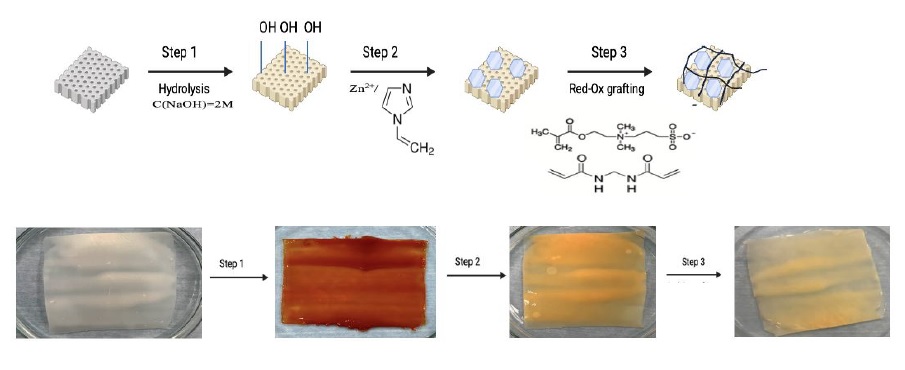Structural Studies and Applications of Sulfobetaine-Based Polybetaines at Interfaces
DOI:
https://doi.org/10.31489/2959-0663/1-24-3Keywords:
Sulfobetaine, Zwitterionic polymer, membrane modification, nanofiltration, Metal-Organic Framework (MOF), ZIF-8 layer, redox grafting, water flux, polyacrylonitrile (PAN)Abstract
The main goals of this research endeavor are to enhance the hydrophilic properties and water permeability of a nanofiltration membrane. This is achieved by incorporating a Zeolitic imidazolate framework (ZIF-8) layer that has been stabilized utilizing a redox-grafted methacrylate hydrogel. The decision to use polyacrylonitrile (PAN) as the substrate material was motivated by its intrinsic hydrophilic properties, which contribute to its ability to resist fouling and promote water permeability. The shift of the surface from hydrophilic to superhydrophilic was confirmed using physicochemical evaluations, including scanning electron microscopy (SEM) and contact angle measurements. Hydrolyzed Polyacrylonitrile Zeolitic imidazolate framework grafted (HPANZifG) membrane exhibited a remarkably high-water flux of 82.3 L/m2 Bar hour, which is an achievement of notable significance. This study makes a valuable contribution to the advancement of nanofiltration technology by proposing potential solutions to the challenges faced in the field of water purification and treatment.

Downloads
Published
How to Cite
Issue
Section
License

This work is licensed under a Creative Commons Attribution-NonCommercial-NoDerivatives 4.0 International License.
This work is licensed under a Creative Commons Attribution-NonCommercial-NoDerivatives 4.0 International License.
Authors retain copyright and grant the journal right of first publication with the work simultaneously licensed under a Creative Commons Attribution License (CC BY-NC-ND 4.0) that allows others to share the work with an acknowledgement of the work's authorship and initial publication in this journal.



